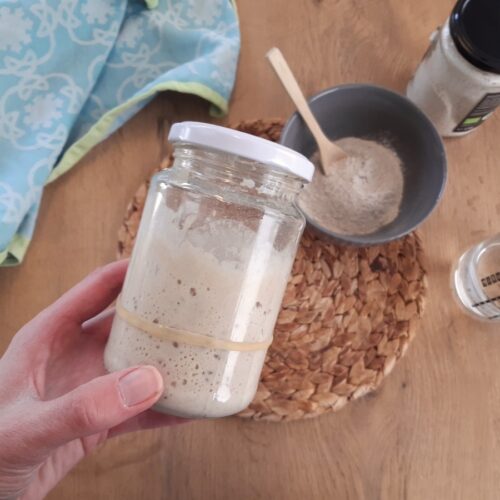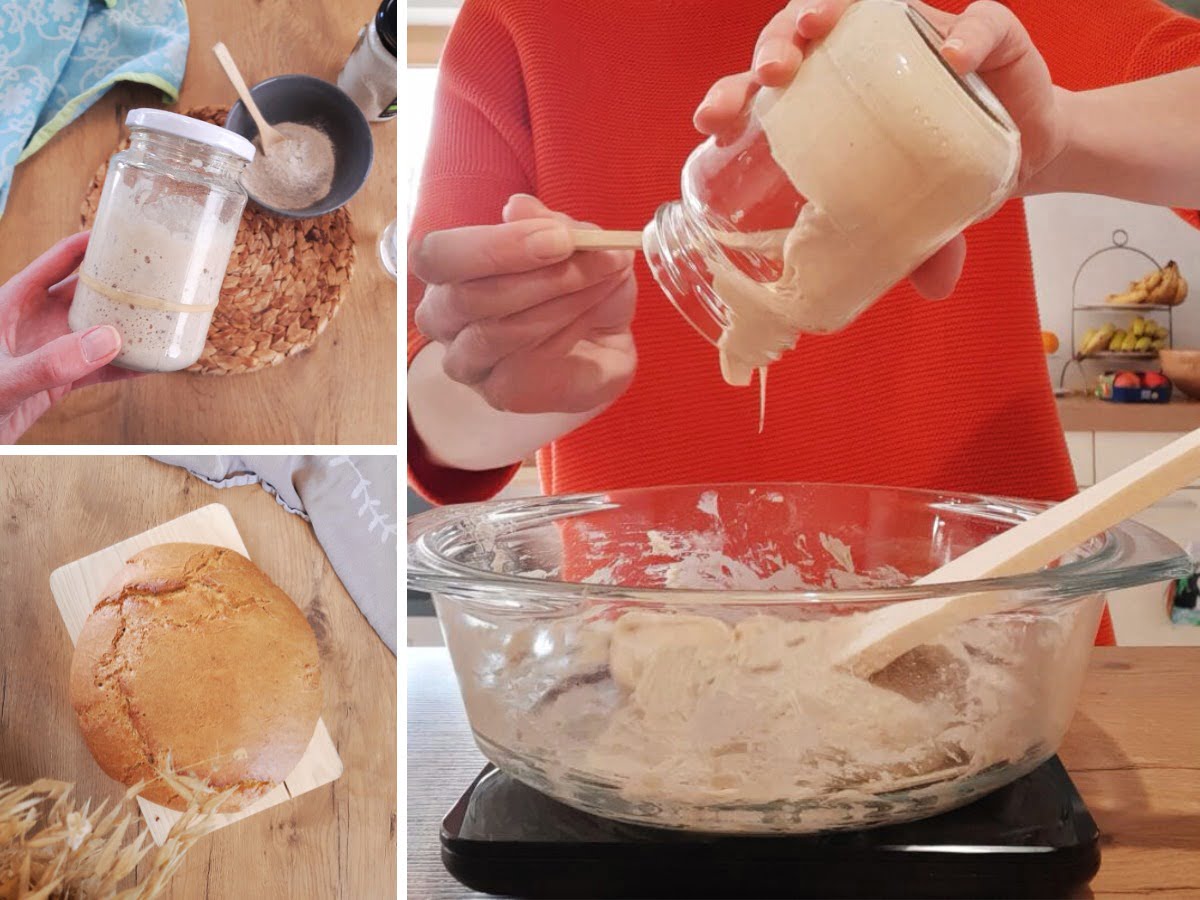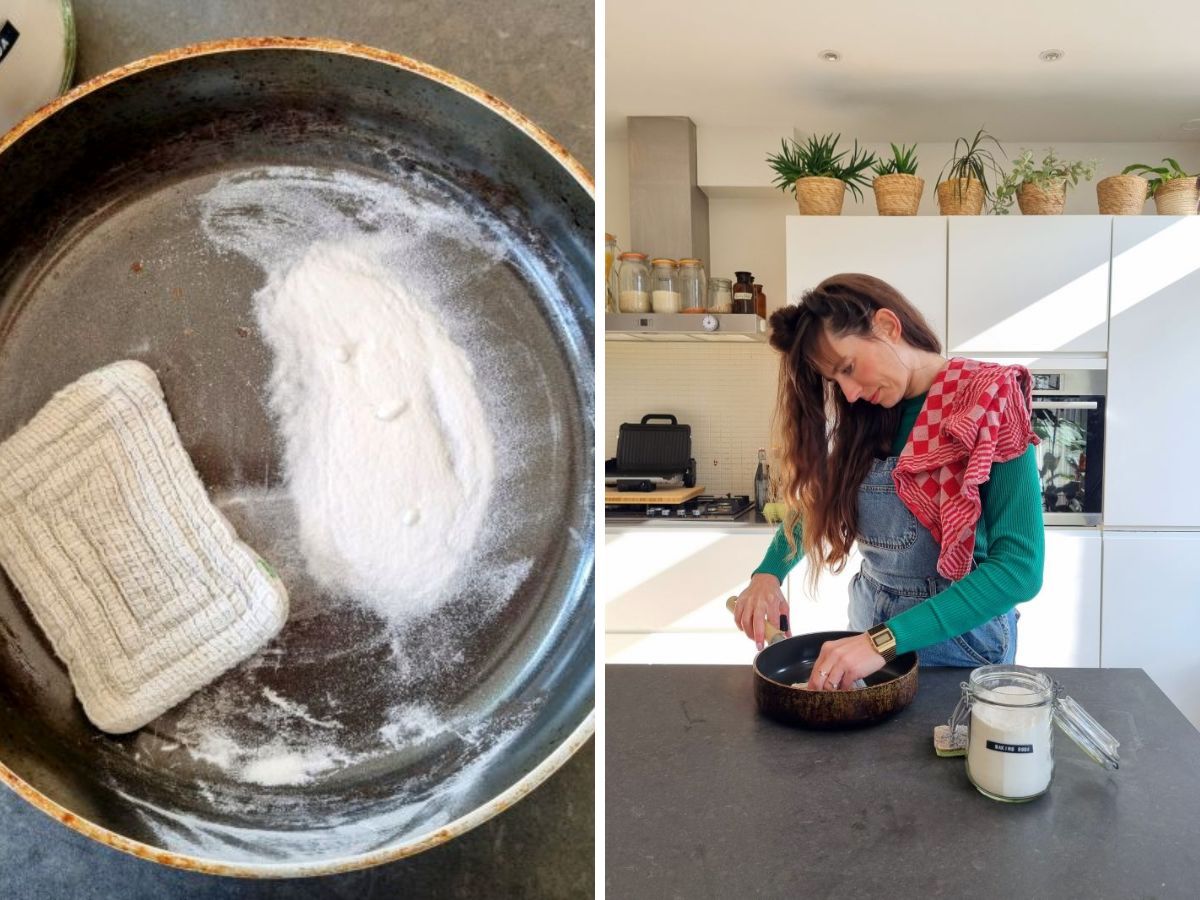Did you manage to make a sourdough starter? Congratulations! If you give this new housemate a little food and some love from time to time, you can enjoy it for years. The older the sourdough gets, the better the bread rises and the better the taste. In this article, we give you the best tips for keeping your sourdough starter alive and stored in the fridge. Of course, you also want to bake bread with your sourdough starter. For this, you need to activate and multiply your sourdough starter. You can do this with our easy step-by-step plan.
What exactly is sourdough bread?
Sourdough bread has basically the same ingredients as regular bread, only there is one important difference: instead of yeast, in this case good bacteria in the sourdough starter ensure that the bread rises well. This not only gives sourdough a special flavour, but also makes the bread easier to digest. Moreover, sourdough bread keeps longer than bread baked with yeast. And you can easily and cheaply make it yourself with just a few ingredients. So plenty of reasons to get started and bake your own sourdough bread.
Sourdough: an interplay of good yeasts and bacteria
As you can read in this article, you can make your own sourdough by fermenting a porridge of flour and water. The basis of fermentation are acetic acid bacteria, lactic acid bacteria and yeasts. Because conditions such as temperature and flour vary, each sourdough becomes ever so slightly different. This gives your sourdough a unique flavour. Because the flavour and strength of the sourdough starter improve with age, we have some tips to ensure you can enjoy your sourdough starter for as long as possible.
Avoid stainless steel
It is recommended not to let your sourdough starter come into contact with stainless steel. This can actually have a negative impact on the good bacteria in your sourdough. I thought this would not be so bad and made the sourdough starter in my stainless steel food processor once. Well, I knew it: my starter smelt strongly of turpentine within no time and I unfortunately had to throw it away. Since then, I use a glass or porcelain bowl or pot and a wooden or silicone spoon.
Feeding sourdough starter
When you don't need the sourdough starter, you can store it in the fridge. The good bacteria in the sourdough are hungry every now and then and want to be fed. You do this by putting a large tablespoon (12 grams) of the sourdough starter into a new jar once a week, then add 60 grams of rye flour and 60 grams of water. Stir well and then put it back in the fridge. Put the lid loosely on the jar so that the jar does not break if bubbles appear. Did you forget to feed your sourdough once? Then you can do it afterwards. Sourdough is forgiving. Two weeks without feeding it should normally survive. It is normal for the starter to smell sour, vinegary. Unfortunately, if it starts smelling like rotten eggs or if you see mould, it's time to say goodbye.


Do you have leftover sourdough? Then definitely try these tasty and easy sourdough crisps.
Sourdough starter left over after activation?
If you feed the sourdough more often than you bake bread with it, you will find that you always have a little sourdough left over. We should thegreenlist.nl not be if we don't have a few ideas so you don't have to throw away any of your beloved sourdough. Do you have some sourdough left over? Then you can use this for many different bakes. Try adding a tablespoon of sourdough to your pancakes or waffle batter. Or how about a sourdough pizza or homemade sourdough pasta? You can even make sourdough crisps: mix your sourdough with a little salt, spread it with a spoon in very thin circles on a baking tray with baking mat or baking paper and then bake it at 200°C, 5 to 8 minutes in the oven. That will be tasty!
Activating sourdough starter so you can bake bread with it
You probably have a sourdough starter to bake the most delicious breads with. We previously shared a easy and delicious recipe for. Want to make this recipe with a little sourdough from the fridge? Then you will have to activate and multiply it first. You can do this with the step-by-step plan below.

Recipe: activate sourdough starter
Kitchenware
- large pot/bowl
- small jar to store the sourdough in
- (wooden or silicone) spoon
- tea towel
- kitchen scales
Ingredients
- 100 gr sourdough starter from the fridge
- 300 gr organic rye flour
- 300 ml lukewarm water, important: never more than 40 °C
Instructions
- Put 100 g of flour and 100 ml of lukewarm water in a bowl, stir well and add the 100 g of sourdough from the fridge. Stir well again and cover with a tea towel. Leave in a warm place for about 6 hours.
- After the 6 hours, add 100 g flour and 100 ml lukewarm water. Stir well and leave covered again in a warm place for 6 hours.
- Add 100 g flour and 100 ml lukewarm water and stir well. This time leave the dough in a warm place for 12 hours.
- 12 hours later: you now have a total of 600g of sourdough ready to bake bread again. Before baking bread, remember to remove 100 g of the sourdough and put it in the fridge for the next time you bake bread! The recipe for sourdough bread can be found in this article.


If all goes well, after activating your sourdough, you will see (small) bubbles and the dough will be nice and fluffy.
More sustainable tips from thegreenlist.nl
- No waste: This way you preserve ingredients longer.
- This is the best fridge layout to keep your food fresh.
- A Dutch cucumber in January, apples in February: how fresh are fresh fruit and vegetables really?
Sources: Eos science, Velt.nu, Smarticular, Book: Die neue Traditionelle Ernährung. Photo credits: Kirsten Schoner.












